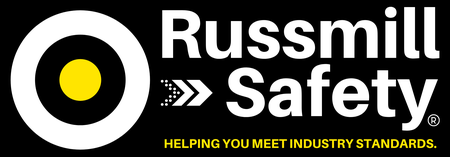
Why It’s Smart To Have Your Employees To Test-Drive Your PPE
As the last line of defense in preventing on-the-job injuries or health-related issues, personal protective equipment (PPE) has long served an important purpose on jobsites, where hazards can be lurking around any corner. Falling objects, arc flash, contaminated air, chemicals, electric shocks and excessive noise are just a few of the perils that PPE can protect against.
But when that PPE doesn’t fit right, looks awkward, or feels like overkill to a worker who’s been exposed to hazards on the job for decades, it may be cast aside or left in an employee’s locker.
When that happens, simply explaining the reasons for using PPE isn’t enough.
A better approach is to get workers involved in the selection and “test-driving” of the PPE beforehand—a strategy that can help increase employee buy-in, make them feel like a valued part of the team, and encourage communication and feedback.
6 Steps to Setting Up a PPE Test-Drive Program.
One of the best ways to get employees to consistently wear their PPE every day (or, as their jobs requires) is by taking a proactive approach. In other words, don’t wait until an accident happens to do something about it. By incorporating these efforts into your overall safety programs, you can effectively head off any problems or accidents that happen when employees think that their PPE is ill-fitting, too hot, too constrictive or unsightly.
Here are the six steps that you can start using today to drive an effective, internal PPE test-drive program:
- Understand why you’re doing it. Buying protective equipment to keep employees safe from hazards requires a dedicated, focused approach. Instead of putting the task of selecting PPE on the shoulders of the procurement department, develop an internal program that’s focused on test-driving products, equipment, and apparel before any orders are placed. By picking products that workers want to wear—and that they’ve self-selected—you’ll vastly increase the odds that those items will be used.
- Choose your team members. Not everyone has to be involved in this effort, but you do want to handpick a group of workers (preferably across different departments/types of work) whose jobs require regular use of PPE. Talk to these trusted employees about how important their feedback and input is, and discuss the company’s overall goals for increasing PPE usage across the workforce. Using the checklist below, team members can vote on their preferred pieces of equipment—an exercise that will help their voices be heard while also reducing the number of complaints about their protective gear (since they selected it).
- Get sample products from your suppliers. Many distributors and manufacturers offer sample products that you can test out first via the “try-before-you-buy” format. A company that you’ve been buying PPE from in substantial quantities, for example, may ask you to commit to providing either positive or negative feedback on its sample products. This is a great opportunity to test-drive the PPE before buying and to share your committee’s insights with the product makers or distributors, in hopes that they factor some or all of the input into the next iteration of the products.
- Create a uniform checklist for team members to use. Rather than just asking workers to try on clothing or safety gear, and then asking them for their opinions, give everyone a uniform checklist that they can use to provide feedback. That way, you’ll be able to compare “apples to apples,” versus having to sort through different judgments and/or opinions.
- Set up a regular schedule for PPE test-drives. Depending on your specific business environment and the work that’s being performed, run the test-drive program quarterly, twice-a-year, or annually. This will help keep you in tune with what’s happening on the jobsite, allow team members to share their input (e.g., on PPE that they might be lacking), and introduce your workforce to new options as they hit the market.
- Use this input to make future decisions. Selecting PPE that workers will use is not a “one and done” process. New jobsite hazards surface regularly, and new PPE options hit the market throughout the year. You can utilize the intelligence and input gathered from past committee meetings to make good PPE selection decisions without having to get everyone together for a meeting. A helmet made by a certain manufacturer that never seems to fit right, for example, or a certain type of safety goggle that tends to slip off during use, probably won’t get good usage rates today or at any time in the future. Keep this in mind as you develop and hone your PPE selection approach.
PPE Scorecard
Give your employees a checklist to evaluate the usability of their PPE. At minimum, the checklist should include these questions, with team members “ranking” each piece of equipment on a scale of 1-5, with a 1 being reject and a 5 being a definite keeper :
- How well does this product fit? Does it run small or large, or does it fit comfortably?
- When you’re wearing this particularly PPE on the jobsite, will it make you too hot, too cold, or keep your temperature just right?
- In the case of safety goggles, helmets, or other accessories, do they stay on your head/face,
- Do you feel that this PPE would effectively protect you from job hazards?
- What do other employees think about how this product looks on you?
- If we gave you this PPE product on the jobsite today, would you start wearing it immediately and use it when the task at hand called for it, or not?
- What other comments would you like to share about this product?
Scoring:
Add up the total number of points for each product, with 30 being the maximum number of points and 0 being the minimum. Use any written answers to help refine your PPE selection decisions.
25-30: Products have passed muster with your assessment team.
15-25: Look at what issues were of most concern and seek out alternative products that your workers will actually wear and benefit from.
Less than 15 points: Explore other options (and have the team test them again).
When employees have a say in what PPE is provided and used, their attitudes and behavior in relation to the PPE changes.

